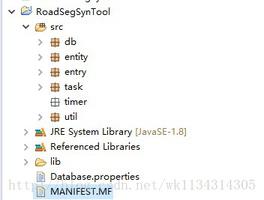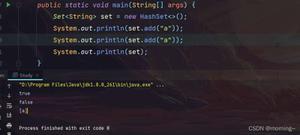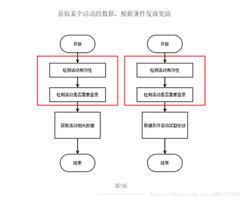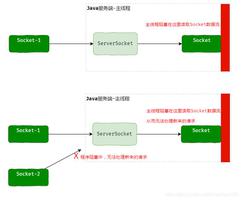Java中SSM+Shiro系统登录验证码的实现方法
先给大家展示下效果图:

1、验证码生成类:
import java.util.Random;
import java.awt.image.BufferedImage;
import java.awt.Graphics;
import java.awt.Font;
import java.awt.Color;
/**
* 验证码生成器类,可生成数字、大写、小写字母及三者混合类型的验证码。 支持自定义验证码字符数量; 支持自定义验证码图片的大小; 支持自定义需排除的特殊字符;
* 支持自定义干扰线的数量; 支持自定义验证码图文颜色
*/
public class ValidateCode {
/**
* 验证码类型为仅数字 0~9
*/
public static final int TYPE_NUM_ONLY = 0;
/**
* 验证码类型为仅字母,即大写、小写字母混合
*/
public static final int TYPE_LETTER_ONLY = 1;
/**
* 验证码类型为数字、大写字母、小写字母混合
*/
public static final int TYPE_ALL_MIXED = 2;
/**
* 验证码类型为数字、大写字母混合
*/
public static final int TYPE_NUM_UPPER = 3;
/**
* 验证码类型为数字、小写字母混合
*/
public static final int TYPE_NUM_LOWER = 4;
/**
* 验证码类型为仅大写字母
*/
public static final int TYPE_UPPER_ONLY = 5;
/**
* 验证码类型为仅小写字母
*/
public static final int TYPE_LOWER_ONLY = 6;
private ValidateCode() {
}
/**
* 生成验证码字符串
*
* @param type
* 验证码类型,参见本类的静态属性
* @param length
* 验证码长度,大于0的整数
* @param exChars
* 需排除的特殊字符(仅对数字、字母混合型验证码有效,无需排除则为null)
* @return 验证码字符串
*/
public static String generateTextCode(int type, int length, String exChars) {
if (length <= 0)
return "";
StringBuffer code = new StringBuffer();
int i = 0;
Random r = new Random();
switch (type) {
// 仅数字
case TYPE_NUM_ONLY:
while (i < length) {
int t = r.nextInt(10);
if (exChars == null || exChars.indexOf(t + "") < 0) {// 排除特殊字符
code.append(t);
i++;
}
}
break;
// 仅字母(即大写字母、小写字母混合)
case TYPE_LETTER_ONLY:
while (i < length) {
int t = r.nextInt(123);
if ((t >= 97 || (t >= 65 && t <= 90)) && (exChars == null || exChars.indexOf((char) t) < 0)) {
code.append((char) t);
i++;
}
}
break;
// 数字、大写字母、小写字母混合
case TYPE_ALL_MIXED:
while (i < length) {
int t = r.nextInt(123);
if ((t >= 97 || (t >= 65 && t <= 90) || (t >= 48 && t <= 57))
&& (exChars == null || exChars.indexOf((char) t) < 0)) {
code.append((char) t);
i++;
}
}
break;
// 数字、大写字母混合
case TYPE_NUM_UPPER:
while (i < length) {
int t = r.nextInt(91);
if ((t >= 65 || (t >= 48 && t <= 57)) && (exChars == null || exChars.indexOf((char) t) < 0)) {
code.append((char) t);
i++;
}
}
break;
// 数字、小写字母混合
case TYPE_NUM_LOWER:
while (i < length) {
int t = r.nextInt(123);
if ((t >= 97 || (t >= 48 && t <= 57)) && (exChars == null || exChars.indexOf((char) t) < 0)) {
code.append((char) t);
i++;
}
}
break;
// 仅大写字母
case TYPE_UPPER_ONLY:
while (i < length) {
int t = r.nextInt(91);
if ((t >= 65) && (exChars == null || exChars.indexOf((char) t) < 0)) {
code.append((char) t);
i++;
}
}
break;
// 仅小写字母
case TYPE_LOWER_ONLY:
while (i < length) {
int t = r.nextInt(123);
if ((t >= 97) && (exChars == null || exChars.indexOf((char) t) < 0)) {
code.append((char) t);
i++;
}
}
break;
}
return code.toString();
}
/**
* 已有验证码,生成验证码图片
*
* @param textCode
* 文本验证码
* @param width
* 图片宽度
* @param height
* 图片高度
* @param interLine
* 图片中干扰线的条数
* @param randomLocation
* 每个字符的高低位置是否随机
* @param backColor
* 图片颜色,若为null,则采用随机颜色
* @param foreColor
* 字体颜色,若为null,则采用随机颜色
* @param lineColor
* 干扰线颜色,若为null,则采用随机颜色
* @return 图片缓存对象
*/
public static BufferedImage generateImageCode(String textCode, int width, int height, int interLine,
boolean randomLocation, Color backColor, Color foreColor, Color lineColor) {
BufferedImage bim = new BufferedImage(width, height, BufferedImage.TYPE_INT_RGB);
Graphics g = bim.getGraphics();
// 画背景图
g.setColor(backColor == null ? getRandomColor() : backColor);
g.fillRect(0, 0, width, height);
// 画干扰线
Random r = new Random();
if (interLine > 0) {
int x = 0, y = 0, x1 = width, y1 = 0;
for (int i = 0; i < interLine; i++) {
g.setColor(lineColor == null ? getRandomColor() : lineColor);
y = r.nextInt(height);
y1 = r.nextInt(height);
g.drawLine(x, y, x1, y1);
}
}
// 写验证码
// g.setColor(getRandomColor());
// g.setColor(isSimpleColor?Color.BLACK:Color.WHITE);
// 字体大小为图片高度的80%
int fsize = (int) (height * 0.8);
int fx = height - fsize;
int fy = fsize;
g.setFont(new Font("Default", Font.PLAIN, fsize));
// 写验证码字符
for (int i = 0; i < textCode.length(); i++) {
fy = randomLocation ? (int) ((Math.random() * 0.3 + 0.6) * height) : fy;// 每个字符高低是否随机
g.setColor(foreColor == null ? getRandomColor() : foreColor);
g.drawString(textCode.charAt(i) + "", fx, fy);
fx += fsize * 0.9;
}
g.dispose();
return bim;
}
/**
* 生成图片验证码
*
* @param type
* 验证码类型,参见本类的静态属性
* @param length
* 验证码字符长度,大于0的整数
* @param exChars
* 需排除的特殊字符
* @param width
* 图片宽度
* @param height
* 图片高度
* @param interLine
* 图片中干扰线的条数
* @param randomLocation
* 每个字符的高低位置是否随机
* @param backColor
* 图片颜色,若为null,则采用随机颜色
* @param foreColor
* 字体颜色,若为null,则采用随机颜色
* @param lineColor
* 干扰线颜色,若为null,则采用随机颜色
* @return 图片缓存对象
*/
public static BufferedImage generateImageCode(int type, int length, String exChars, int width, int height,
int interLine, boolean randomLocation, Color backColor, Color foreColor, Color lineColor) {
String textCode = generateTextCode(type, length, exChars);
BufferedImage bim = generateImageCode(textCode, width, height, interLine, randomLocation, backColor, foreColor,
lineColor);
return bim;
}
/**
* 产生随机颜色
*
* @return
*/
private static Color getRandomColor() {
Random r = new Random();
Color c = new Color(r.nextInt(255), r.nextInt(255), r.nextInt(255));
return c;
}
}
2、Controller
/**
* 生成验证码
* @param request
* @param response
* @throws IOException
* @ValidateCode.generateTextCode(验证码字符类型,验证码长度,需排除的特殊字符)
* @ValidateCode.generateImageCode(文本验证码,图片宽度,图片高度,干扰线的条数,字符的高低位置是否随机,图片颜色,字体颜色,干扰线颜色)
*/
@RequestMapping(value = "validateCode")
public void validateCode(HttpServletRequest request, HttpServletResponse response) throws IOException {
response.setHeader("Cache-Control", "no-cache");
String verifyCode = ValidateCode.generateTextCode(ValidateCode.TYPE_NUM_LOWER, 4, null);
request.getSession().setAttribute("validateCode", verifyCode);
response.setContentType("image/jpeg");
BufferedImage bim = ValidateCode.generateImageCode(verifyCode, 90, 30, 5, true, Color.WHITE, Color.BLUE, null);
ImageIO.write(bim, "JPEG", response.getOutputStream());
}
/**
* 登录请求
* @param
*/
@RequestMapping(value = "login", method = RequestMethod.POST, produces = "text/html; charset=utf-8")
public String login(HttpServletRequest request, HttpServletResponse response, UserEntity user) {
//首先进行验证码验证
Session session = SecurityUtils.getSubject().getSession();
String code = (String) session.getAttribute("validateCode");
String submitCode = WebUtils.getCleanParam(request, "validateCode");
if (StringUtils.isEmpty(submitCode) || !StringUtils.equals(code,submitCode.toLowerCase())) {
request.setAttribute("LOGIN_ERROR_CODE", LoginConstant.LOGIN_ERROR_CODE_100000);
request.setAttribute("LOGIN_ERROR_MESSAGE", LoginConstant.LOGIN_ERROR_MESSAGE_VALIDATECODE);
return "login";
}
// 想要得到 SecurityUtils.getSubject() 的对象..访问地址必须跟shiro的拦截地址内.不然后会报空指针
Subject sub = SecurityUtils.getSubject();
// 用户输入的账号和密码,,存到UsernamePasswordToken对象中..然后由shiro内部认证对比,
// 认证执行者交由ShiroDbRealm中doGetAuthenticationInfo处理
// 当以上认证成功后会向下执行,认证失败会抛出异常
UsernamePasswordToken token = new UsernamePasswordToken(user.getAccountName(), user.getPassWord());
try {
sub.login(token);
} catch (LockedAccountException lae) {
token.clear();
request.setAttribute("LOGIN_ERROR_CODE", LoginConstant.LOGIN_ERROR_CODE_100002);
request.setAttribute("LOGIN_ERROR_MESSAGE", LoginConstant.LOGIN_ERROR_MESSAGE_SYSTEMERROR);
return "login";
} catch (ExcessiveAttemptsException e) {
token.clear();
request.setAttribute("LOGIN_ERROR_CODE", LoginConstant.LOGIN_ERROR_CODE_100003);
request.setAttribute("LOGIN_ERROR_MESSAGE","账号:" + user.getUserName() + LoginConstant.LOGIN_ERROR_MESSAGE_MAXERROR);
return "login";
} catch (AuthenticationException e) {
token.clear();
request.setAttribute("LOGIN_ERROR_CODE", LoginConstant.LOGIN_ERROR_CODE_100001);
request.setAttribute("LOGIN_ERROR_MESSAGE", LoginConstant.LOGIN_ERROR_MESSAGE_USERERROR);
return "login";
}
return "redirect:/index.shtml";
}
注意:
登录方法里面一些参数的定义:
public interface LoginConstant
{
String LOGIN_ERROR_CODE_100000 = "100000";
String LOGIN_ERROR_MESSAGE_VALIDATECODE = "验证码输入错误,请重新输入!";
String LOGIN_ERROR_CODE_100001 = "100001";
String LOGIN_ERROR_MESSAGE_USERERROR = "账号或密码错误,请重新输入!";
String LOGIN_ERROR_CODE_100002 = "100002";
String LOGIN_ERROR_MESSAGE_SYSTEMERROR = "用户已经被锁定不能登录,请与管理员联系!";
String LOGIN_ERROR_CODE_100003 = "100003";
String LOGIN_ERROR_MESSAGE_MAXERROR = "登录失败次数过多,锁定10分钟!";
String LOGIN_ERROR_CODE_100004 = "100004";
String LOGIN_ERROR_MESSAGE_FORCELOGOUT = "您已经被管理员强制退出,请重新登录";
}
3、登录jsp(重要代码)
路径信息:
<%
String path = request.getContextPath();
String basePath = request.getScheme()+"://"+request.getServerName()+":"+request.getServerPort()+path;
%>
js:用于更换验证码图片
<script>
function reloadValidateCode(){
$("#validateCodeImg").attr("src","<%=basePath%>/validateCode.shtml?data=" + new Date() + Math.floor(Math.random()*24));
}
</script>
登录表单里面的标签:
<img id="validateCodeImg" src="<%=basePath%>/validateCode.shtml" /> <a href="#" rel="external nofollow" onclick="javascript:reloadValidateCode();">看不清?</a>
4、Shiro匿名访问配置(不配置无法生成验证码图片)
<!--自定义filterChainDefinitionMap -->
<bean id="chainDefinitionSectionMetaSource" class="com.collection.shiro.ChainDefinitionSectionMetaSource">
<property name="filterChainDefinitions">
<value>
/validateCode.shtml = anon//添加这行
</value>
</property>
</bean>
以上所述是小编给大家介绍的Java中SSM+Shiro系统登录验证码的实现方法,希望对大家有所帮助,如果大家有任何疑问请给我留言,小编会及时回复大家的。在此也非常感谢大家对网站的支持!
以上是 Java中SSM+Shiro系统登录验证码的实现方法 的全部内容, 来源链接: utcz.com/p/213515.html









